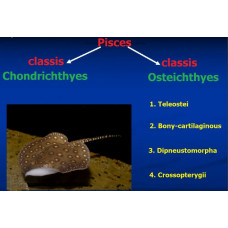Hierarchical classification - arrangement of taxonomic categories representing a group of animals (fish), which are united on the principle of similarity in origin, in order from highest to lowest - species, genus, family, family, troop, etc.
Modern classifications of living organisms are based on the hierarchical principle. Different levels of hierarchy (ranks) have their own names (from the highest to the lowest): domain, realm, kingdom, type or department, class, troop or order, family, genus and species. Species are already composed of individuals.
It is accepted that any particular organism must consistently belong to all seven categories. In complex systems, additional categories are often distinguished, for example, using the prefixes supra- and sub- (supraclass, subtype, etc.). Each taxon must have a certain rank, i.e. belong to some taxonomic category.
By the beginning of the 20th century, seven major taxonomic categories had been formalized in systematics:
regnum
phylum
classis
ordo
familia
genus
species

